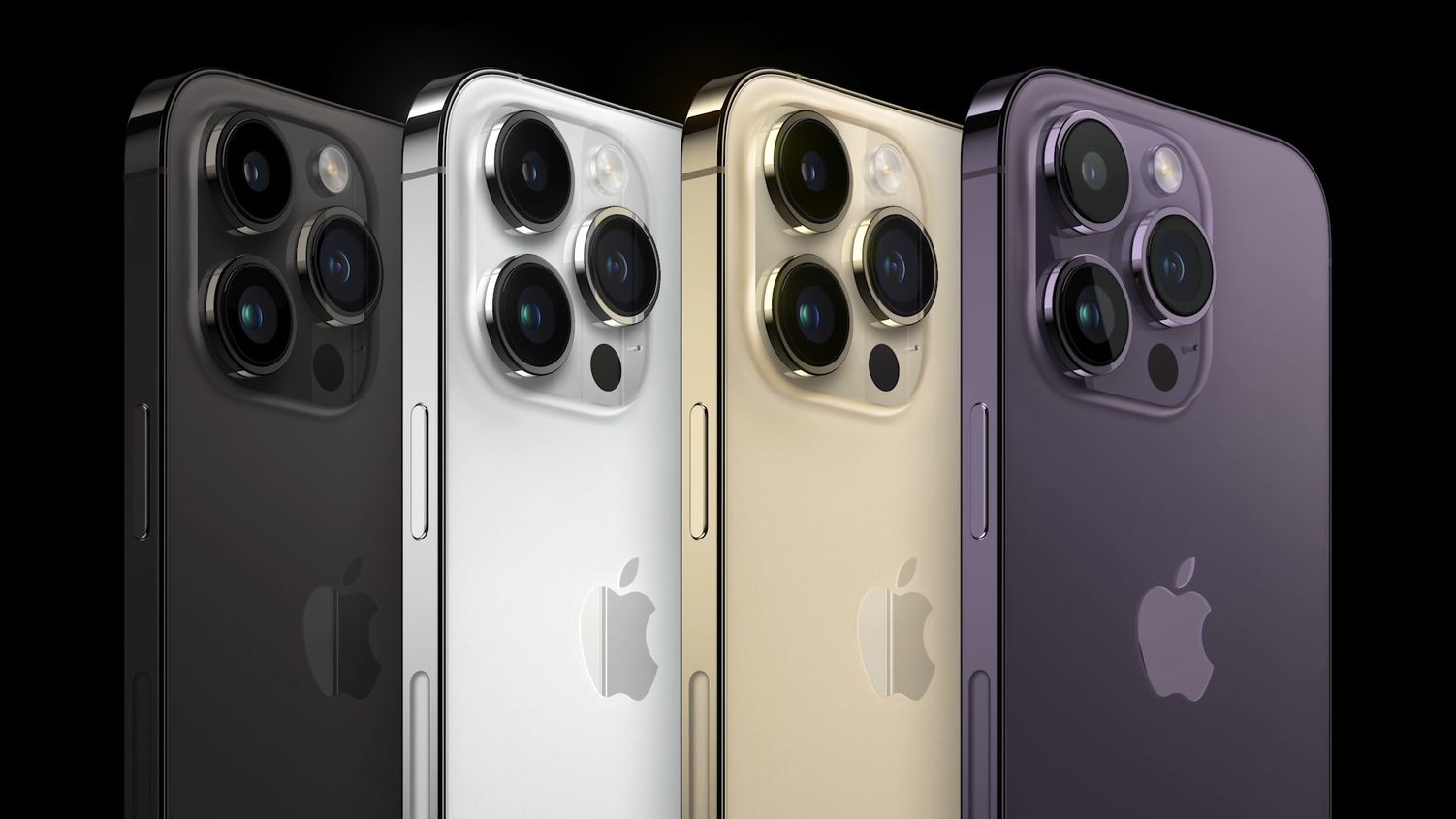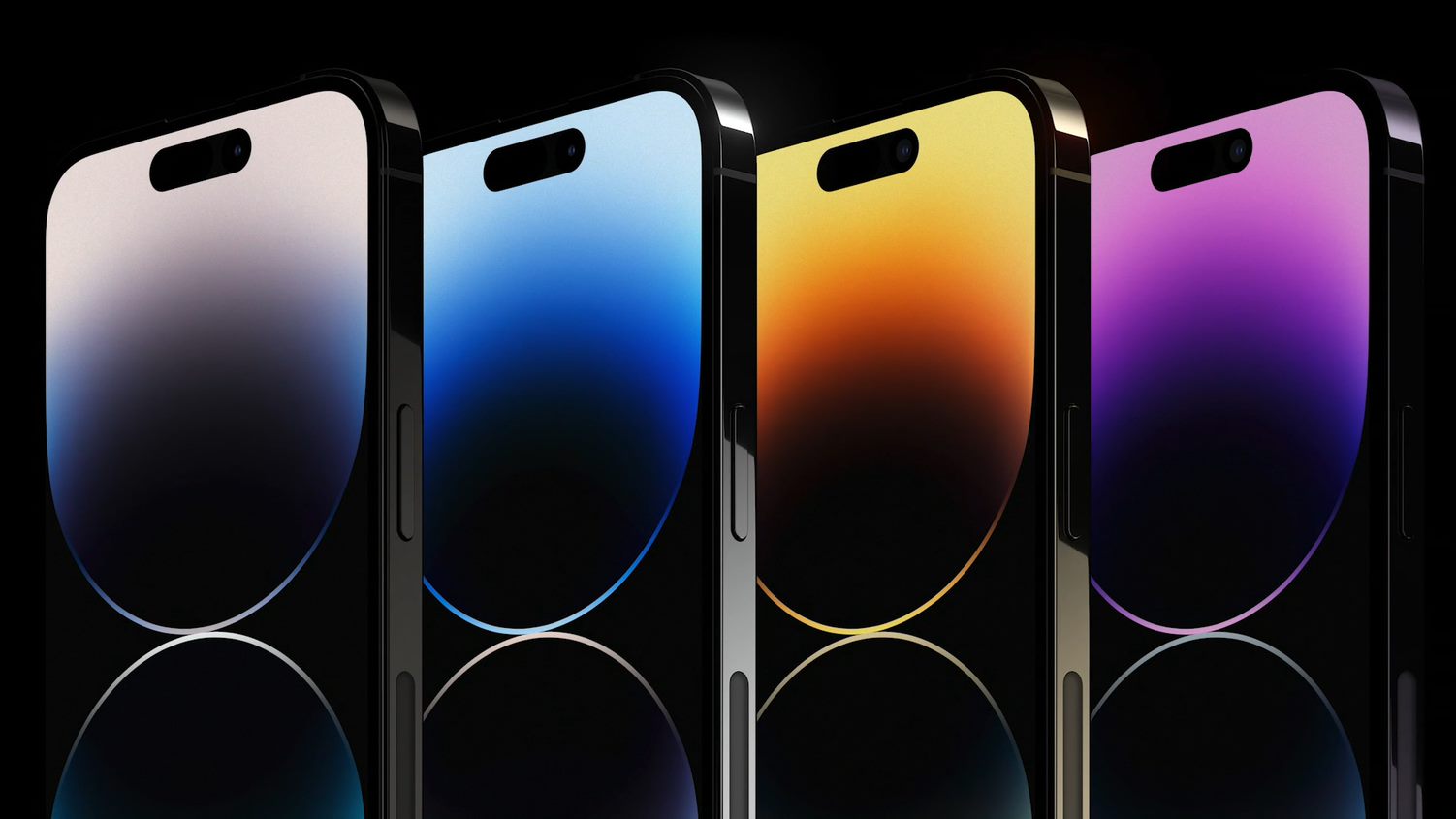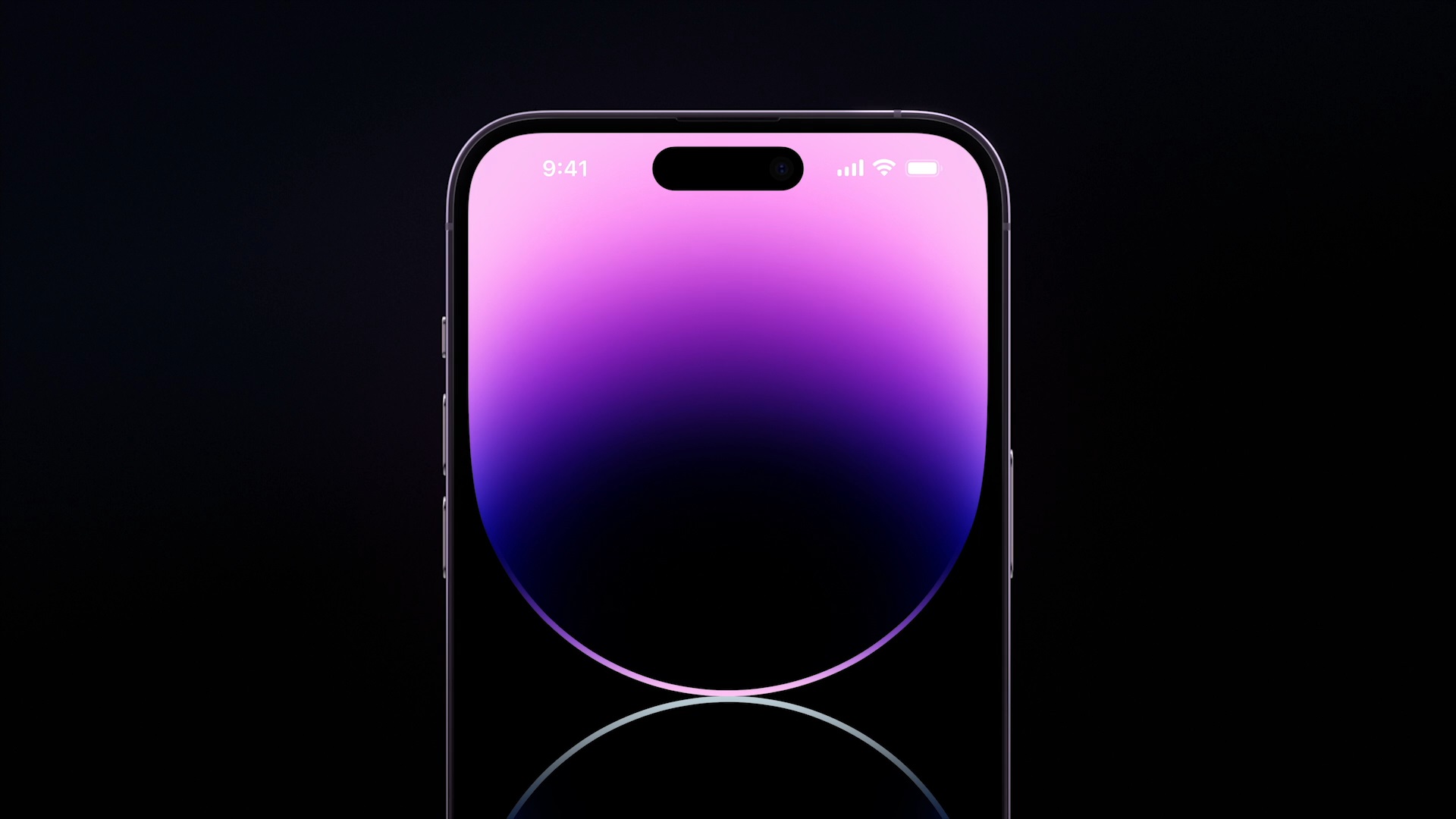Apple’s new iPhone 14 models are here, and there are four to choose from this year: the iPhone 14, iPhone 14 Plus, iPhone 14 Pro, and iPhone 14 Pro Max. That’s right, there’s no Mini version of the iPhone for 2022, and Apple has replaced it with a new, larger Plus model, a name that hasn’t been used on an iPhone since the iPhone 8 Plus from 2017.
- iPhone 14 and iPhone 14 Plus
- iPhone 14 cameras
- iPhone 14 Crash Detection and Satellite
- iPhone 14 and iPhone 14 Plus price and availability
- iPhone 14 Pro and iPhone 14 Pro Max
- iPhone 14 Pro screen and Dynamic Island
- iPhone 14 Pro cameras
- iPhone 14 Pro processor and design
- iPhone 14 Pro and iPhone 14 Pro Max price and availability
At this point, you want to know which one is the right iPhone 14 for you, right? That’s what we’re going to help you out with here, through a complete rundown of what makes each new iPhone 14 special.
iPhone 14 and iPhone 14 Plus
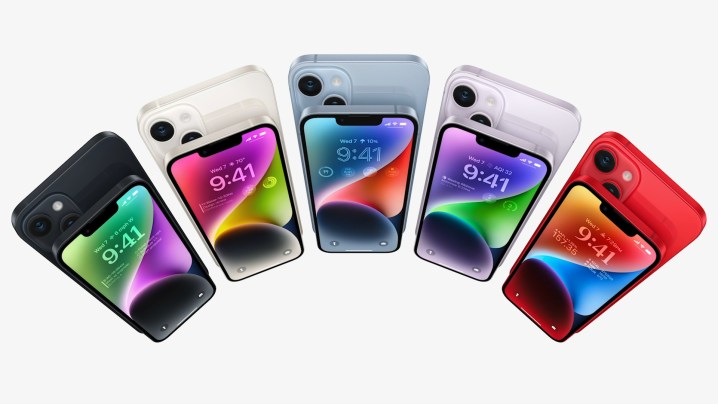
The iPhone 14 is the simplest new iPhone model. It has a 6.1-inch Super Retina XDR OLED screen covered in Apple’s protective Ceramic Shield glass, while the body is made from aluminum. The design looks the same as the iPhone 13 and, therefore, very similar to the iPhone 12, too. It has flat sides and a flat rear panel. It’s IP68 water- and dust-resistant, making it durable enough for everyday use.
This also applies to the iPhone 14 Plus, and the main difference between them (outside of the price) is the Plus model has a larger 6.7-inch Super Retina XDR OLED screen. This also means the Plus is a little heavier — 203 grams rather than 178 grams — and the battery has a higher capacity for slightly longer use time, with Apple claiming 26 hours of video playback compared to 20 hours. Otherwise, all the details that follow are applicable to both new iPhone 14 phones, which will run the new iOS 16 software out of the box.
iPhone 14 cameras

On the back are two cameras, and while the 12-megapixel wide-angle camera has been carried over from the last models, the 12MP main camera is all new for the iPhone 14. It has an f/1.5 aperture and larger pixels, which Apple promises will deliver more detail, better clarity, less noise, and even faster performance than before. It also has the second generation of Apple’s optical image stabilization (OIS) feature.
The TrueDepth selfie camera has been updated with autofocus, a first for the iPhone’s front camera, and has been given an f/1.9 aperture. Both features together should improve low-light performance. Adding to this is a new feature called the Photonic Engine, which works on each of the iPhone 14’s cameras to enhance low-light photography. Apple says performance will be improved by two and a half times on the main camera and two times on both the wide-angle and TrueDepth cameras.
Add in a new TrueTone flash, Dolby Vision HDR, and a new Action mode that brings gimbal-like stabilization to video, and the iPhone 14’s camera has had a decent upgrade over the iPhone 13. What else? There are two new safety features: Crash Detection and Emergency SOS via Satellite. While we hope you won’t ever have to use them, they’re unique on a modern smartphone.
iPhone 14 Crash Detection and Satellite
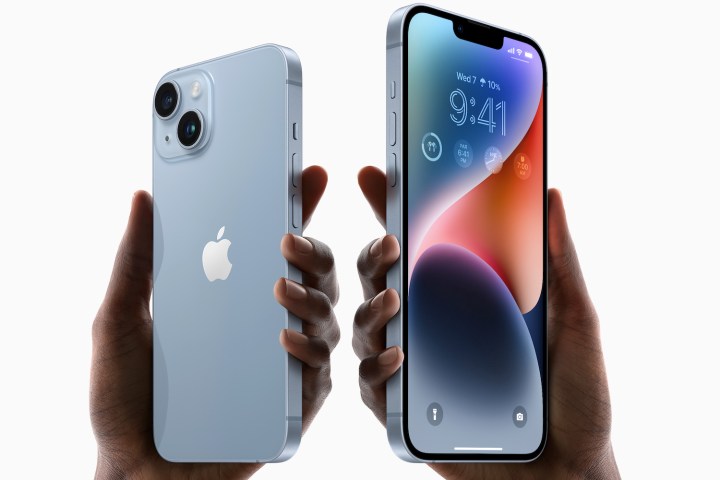
Crash Detection works as it does on the new Apple Watch Series 8 — by measuring G-force and listening out for specific sounds related to a car accident when you’re driving, then automatically calling an emergency service for you. Emergency SOS via Satellite sends messages to an emergency service when you don’t have cellular connectivity by using satellites.
It has a clever system to help guide your phone toward the satellites in the sky (because you can’t see them, obviously) and a series of canned messages to make it fast and simple to get help when you need it. It also works with the Find My app, so you can send your location to friends and family. Initially, the feature will only be available in the U.S. and Canada.
Apple has given the iPhone 14 the A15 Bionic processor and 5G connectivity, plus there’s support for eSIM. This is important to know when you’re buying an iPhone 14 in the U.S., as it won’t come with a SIM tray like older models, and you’ll set the phone up using an eSIM system.
iPhone 14 and iPhone 14 Plus price and availability
Release dates and prices vary for the iPhone 14 and iPhone 14 Plus, so let’s start with the iPhone 14. It will be available for pre-order on September 9 at 5 a.m. PT, and the general release will be on September 16. The iPhone 14 Plus will also be available to pre-order on September 9 but won’t be out until October 7.
Here are the prices:
- Apple iPhone 14 128GB: $799, or 849 British pounds
- Apple iPhone 14 256GB: $899, or 959 pounds
- Apple iPhone 14 512GB: $1,099, or 1,179 pounds
- Apple iPhone 14 Plus 128GB: $899, or 949 pounds
- Apple iPhone 14 Plus 256GB: $999, or 1,059 pounds
- Apple iPhone 14 Plus 512GB: $1,199, or 1,279 pounds
There are five colors to choose from: blue, Midnight, Starlight, purple, and (PRODUCT)RED.
iPhone 14 Pro and iPhone 14 Pro Max

If the iPhone 14 sounds like a small update over the iPhone 13 and hasn’t quite tempted you enough, then what you’re looking for is the iPhone 14 Pro or Pro Max. Apple has pulled out more stops for its Pro line than ever, and the two are substantially different from the cheaper versions.
Again, the main difference between the two is the screen size. There are no additional camera features on the Pro Max, although the bigger device does house a slightly higher-capacity battery, so you may also gain some use time if you buy it. The iPhone 14 Pro has a 6.1-inch Super Retina XDR screen with a ProMotion 120Hz refresh rate, while the iPhone 14 Pro Max has a 6.7-inch Super Retina XDR screen with ProMotion.
For the battery, Apple expects the iPhone 14 Pro Max to play video for 29 hours, while the smaller iPhone 14 Pro will last for 23 hours. Like the iPhone 14 and iPhone 14 Plus, they both have MagSafe wireless charging, and if you use a 20W charger, it will top the battery up to 50% in about 35 minutes. The Pro and Pro Max also have Crash Detection and Emergency SOS via Satellite and will run the new iOS 16 software. All the features we talk about from here are shared by both Pro models.
iPhone 14 Pro screen and Dynamic Island
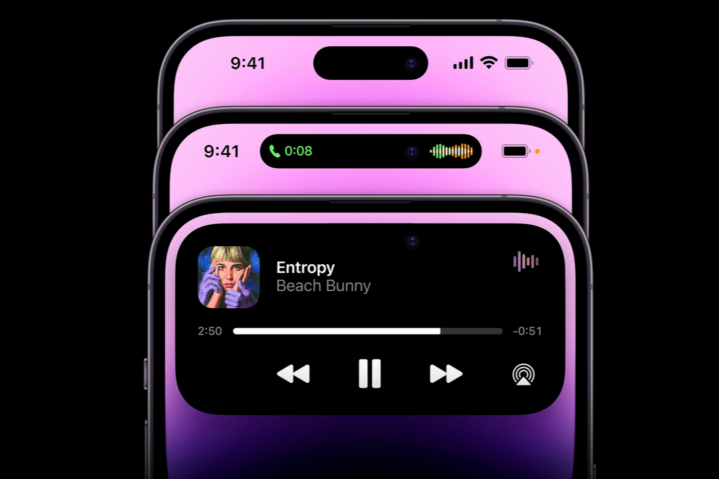
The screens are packed with exciting new technology. They have thinner bezels and more active screen space than before, and they can operate at up to 1,600 nits of brightness, with a boost to 2,000 nits of brightness in sunlight outdoors. Best of all, an always-on screen has come to the iPhone, ready to make great use of iOS 16’s new lock-screen features. It’s very power efficient, dropping the refresh rate down to 1Hz, and then having co-processors deal with the information that appears on the screen.
You’ll notice the notch at the top of the screen has been redesigned and is now shaped like a pill, but what you may not be expecting is for it to be part of a major new UI feature called Dynamic Island. Forget the silly name, as this is one of the most innovative new features we’ve seen on an iPhone for a while. Using a combination of the pill-shaped cutout and iOS, it adapts to show a wide range of information and tools, popping up and changing shape when needed. It promises to change the way we use the screen on the top iPhone 14 models completely.
iPhone 14 Pro cameras
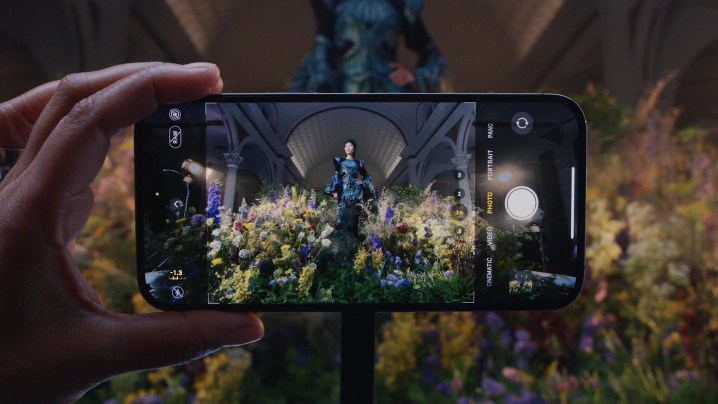
Moving on to the cameras, a new 48MP main camera heads the lineup, equipped with an f/1.78 aperture and quad-pixel binning, and is joined by a 12MP wide-angle camera and a 12MP telephoto camera with a 3x optical zoom. Around the front is the same new 12MP autofocus camera found on the iPhone 14 and iPhone 14 Plus, but here it offers 4K ProRes video recording at 30 frames per second. A redesigned Adaptive True Tone flash has nine LEDs that adapt to photos being taken to provide the best lighting.
The cameras also use the Photonic Engine and feature the stabilized Action Mode, plus there’s ProRAW enabled on the main 48MP camera and ProRes video recording at 4K and 30 fps. The macro mode has been improved too, plus the Pro and Pro Max have a Night Portrait mode not seen on the other models and a LiDAR sensor to assist with focus.
iPhone 14 Pro processor and design
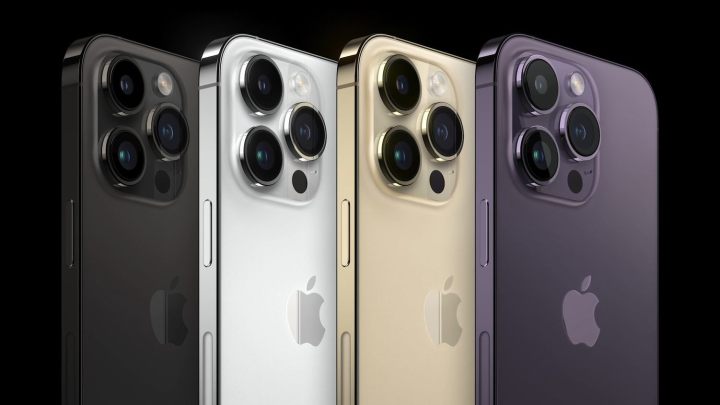
Apple has equipped both the Pro and Pro Max with its latest A16 Bionic processor, Apple’s first built using a 4nm process for better efficiency. It enables the phone’s computational photography features, and the new GPU promises more memory bandwidth for better graphics in games.
Both Pro models have a stainless steel chassis, Ceramic Shield protective glass over the screen, and are IP68 water-resistant. Both have a relatively slim 7.85mm chassis but are heavy phones, with the iPhone 14 Pro weighing 206 grams and the iPhone 14 Pro Max a hefty 240 grams. If you buy the iPhone 14 Pro or Pro Max in the U.S., it won’t come with a SIM tray; instead, it will use an eSIM system.
iPhone 14 Pro and iPhone 14 Pro Max price and availability
Both the iPhone 14 Pro and iPhone 14 Pro Max will be ready for pre-order on September 9 at 5 a.m. PT and then available to buy starting on September 16. The prices are as follows:
- iPhone 14 Pro 128GB: $999, or 1,099 pounds
- iPhone 14 Pro 256GB: $1099, or 1,209 pounds
- iPhone 14 Pro 512GB: $1299, or 1,429 pounds
- iPhone 14 Pro 1TB: $1499, or 1,649 pounds
- iPhone 14 Pro Max 128GB: $1,099, or 1,199 pounds
- iPhone 14 Pro Max 256GB: $1,199, or 1,309 pounds
- iPhone 14 Pro Max 512GB: $1,399, or 1,529 pounds
- iPhone 14 Pro Max 1TB: $1,499, or 1,749 pounds
There are four colors to choose from: Space Black, silver, gold, and Deep Purple.
That covers it for the new iPhone 14 and iPhone 14 Pro models, but they weren’t the only new products announced by Apple during its September 7 event. We’ve got all the information on the others here, plus special features on the Apple Watch Series 8, the Apple Watch SE 2, and the exciting new Apple Watch Ultra. Take a look when you’ve decided which new iPhone is for you.
Editors' Recommendations
- 5 phones you should buy instead of the iPhone 15
- Why you should buy the iPhone 15 Pro instead of the iPhone 15 Pro Max
- 3 reasons why I’ll actually use Anker’s new iPhone power bank
- There’s a big problem with the iPhone’s Photos app
- 5 phones you should buy instead of the Google Pixel 8



